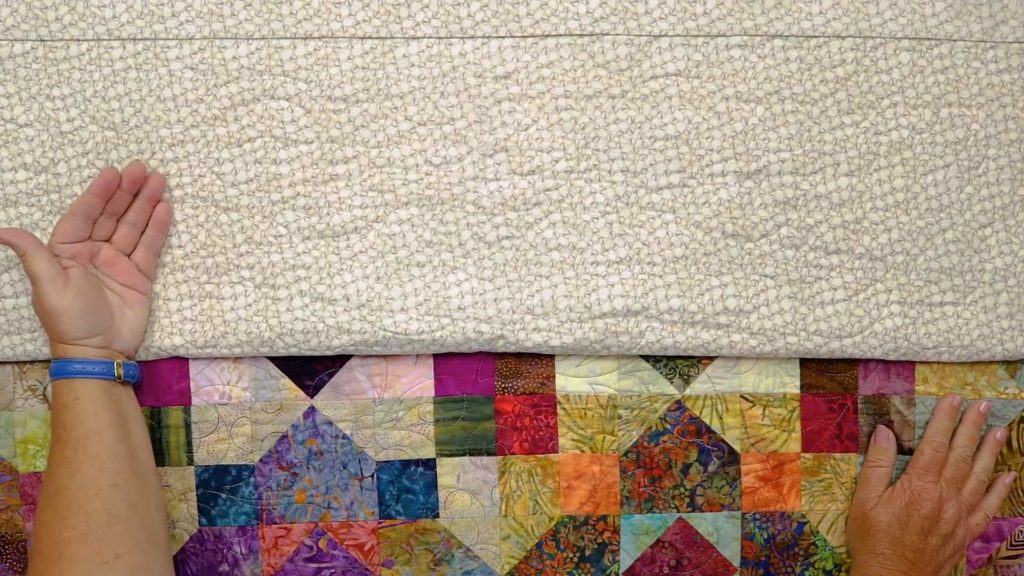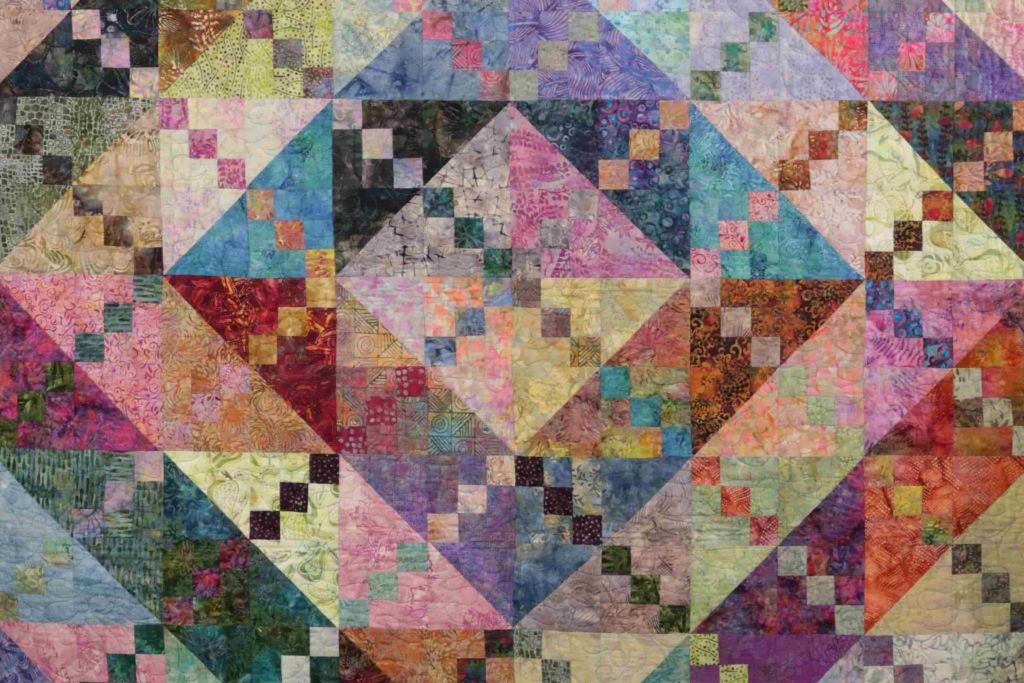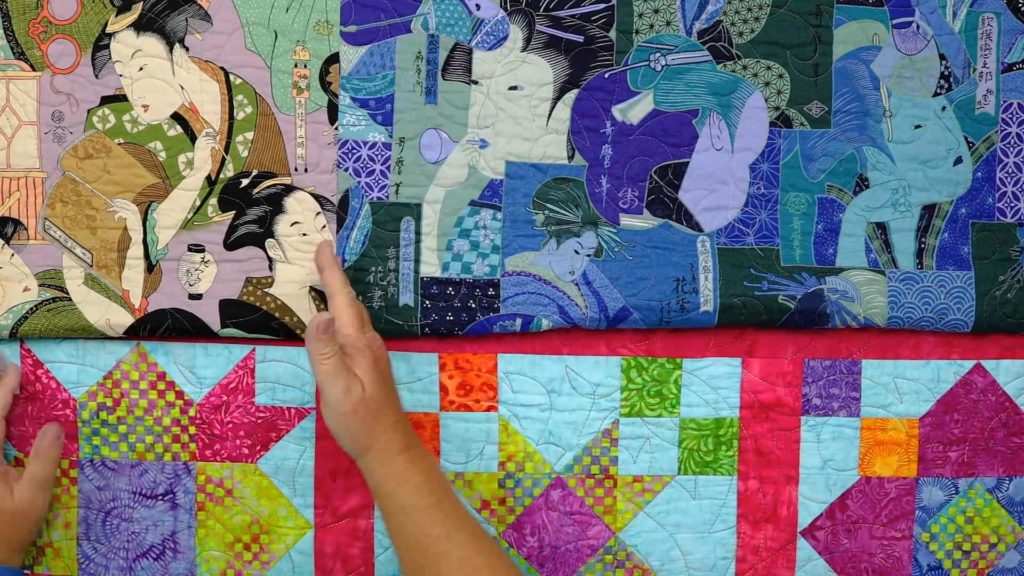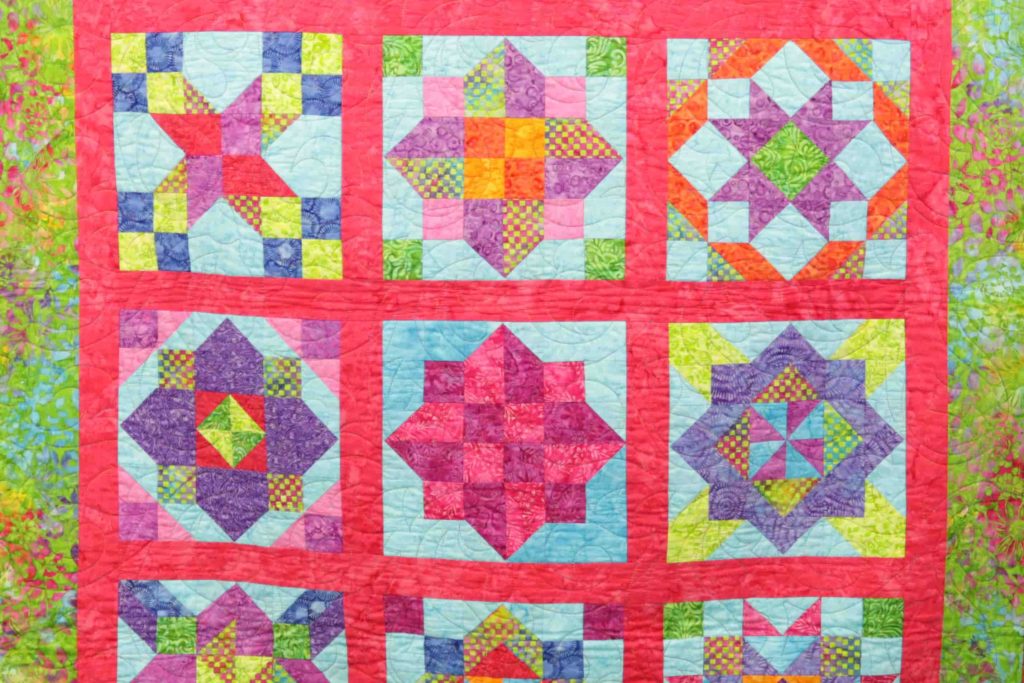Quilt designer Linda Hahn shares her pro tips and tricks to get the perfect quilt backing.
Test and keep free this week’s self-healing cutting mat for perfectly cut fabric when you provide feedback Click here to learn more now
One of the most important steps in the quilting process is choosing your back. As quilters, we know that the best quilts tell stories, and as storytellers, we know that there’s always two sides.
Quilt backing is just as important as the quilt top, albeit far less labor-intensive, because it is a wonderful opportunity to display honest personality that we may not feel as comfortable showing on the surface.

Plus, since you put so much time and effort into piecing the top, you certainly want to finish your quilt with finesse.
The Do’s and Don’ts of Quilt Backing
- 1. Don’t use muslin or a sheet as backing. Just don’t. Rookie mistake. An avid quilter like you knows better.
- 2. Do use prints (rather than solids) to hide thread tension and stitch imperfections, as well as to complement free motion quilting design.

- 3. Do match the thread to the backing fabric if you’re using a single print to back a fairly simple color scheme. Use a variegated thread to best blend into more colorful quilt tops.

- 4. Don’t hesitate to experiment in combining fabrics you love to compose your quilt backing. It doesn’t have to be perfectly symmetrical, or matchy-matchy. That’s what quilt tops are for.

- 5. Do try using borders to make an undersized cut of fabric fit as backing. Who says borders are only for tops?

- 6. Don’t sew your backing horizontally when longarm quilting. Vertical seams will be more forgiving, and help you avoid sewing against the grain and getting a wave in your backing.
- 7. Do tell your story. And don’t hold back on the quilt backing. Use that fabric you just had to buy and didn’t know why, because perhaps it reveals something about you that someone else will relate to.
What interesting trick will you try to make your backing fun and unique? Share with us in the comments section!
Test and keep free this week’s self-healing cutting mat for perfectly cut fabric when you provide feedback Click here to learn more now
I used to do lots of quilting, but to me, it is just too messy.
Just made my first baby quilt and I used a sheet for backing I thought I was doing a good Thing ? Why shouldn’t I do this?
Nice ideas!
Good ideas, things I never thought of, yes muslin is boring and it is not eye catching, made me really think about it, good bye muslin. Thank yo so much!
I have made I quilt with patterned backing using variegated thread on the back and a solid on the front of the quilt . However, my seam was horizontal in order to match the pattern on the back. I could have purchased more fabric to make the seams vertical. I will next time. For #5, this is freedom; #1 why not a high thread count for a sheet?; # 7 thank you for the tips!
Fantastic ideas!
To you for advisre . I love quilting but dislike to do backing. Theses suggestions might help
I’m new to quilting and I find it very relaxing when you know a little bit about what you are doing. I’m staying with it maybe one day I’ll be to make a really nice quilt. I love working with mix color fabrics.
I love quilting and thanks for the tips love the clips I received Use them all the time especially when binding
Thank you that was very helpful to me I am very new to quilt. I am learning on the go kim x
This is for Dawn. A couple of years ago, I used a printed sheet for the backing of my quilt. It complimented the fabrics used on the quilt front very well. I don’t regret using it and would do it again. I watched the video about quilt backing and Linda said it is a “rookie mistake”, “not the best choice” and “just don’t” use a sheet as backing. But the answer to the question…why not, was not given. Quilting is a very personal form of art. I have always believed you should do what feels and looks right to you. But like you, I would like to hear an answer to why not?
My recent Quilt was Compass stars and Log Cabins, was a California King. It was very bright Purples and Turquois greens and Different Colors of blue. So I Picked the Backing that had purple and Turquois and greens, with the dots through out the Backing. it is all done. thanks for Sharing your Tips.
Thank you for sharing, I had an old quilt top (purchased from a thrift store) that I loved (it is hand pieced, and I am using muslin for the back, guess what… I am changing it. I have several fabrics that I bought and love but may not fit into a pieced front.
I’m still fairly new to quilting, however, I have always used a colorful or patterned material for my backing. My grandmother and mother used muslin or sheets and I feel that is so boring to use something that was so cheap back then. Too me it looks cheap. The only time I used Muslin is when I did The Cathedral Window Quilt for my first grandson with his name embroidered on one of the Windows. Even when I do a Rag Quilt for the grandbabies I still use color on the back. I just made a Harry Potter Quilt for one of my Daughters-In-Law and did a mixture of Harry Potter’s Story on the back. As soon as I can get back to my room, I will be making Easy Table Runners. I plan on tackling the 3 yard quilts after the fist of the year.
I am fairly new to quilting too and have also not understood why it’s not a good idea to use a sheet as quilt backing. Or why flannel is not a good fabric choice. I love the idea of no seams on the quilt backing with a sheet, and the soft warmth of flannel seems to make a quilt even cozier.
My mom always used JC Penney’s percale sheets 35 years ago for the backing and spacing between quilt blocks. They have all lasted and are still in fine shape. Some of the blocks themselves have worn through though. The key being they were the sheets of 35 years ago. Most of today’s sheets wouldn’t hold up.
I have several old quilts that are around 70 years old and have ragged edges. What can I do with them? My mother made them so I don’t want to destroy them.